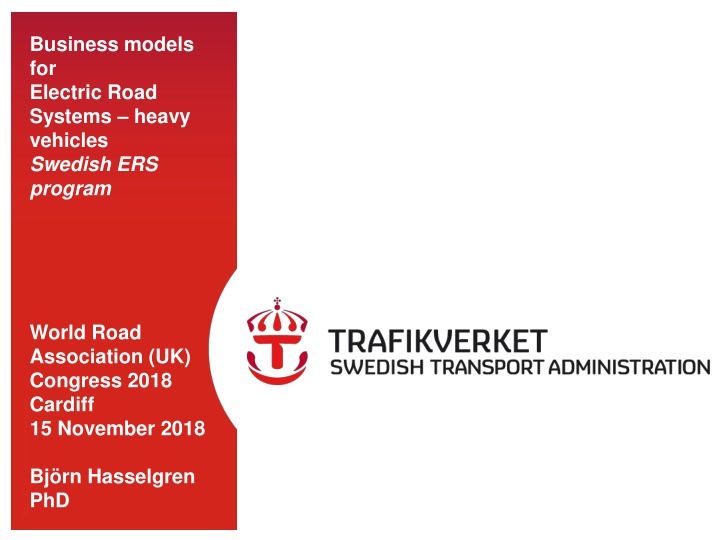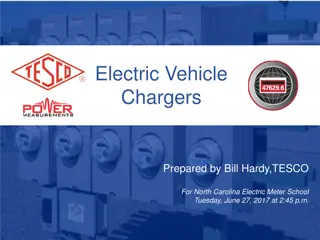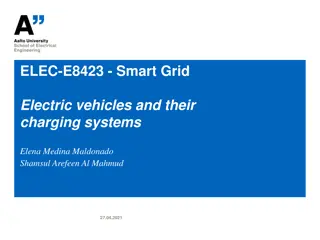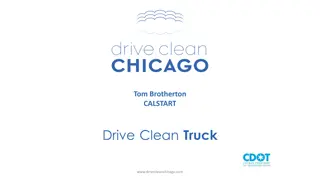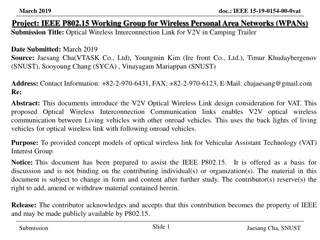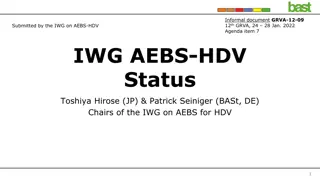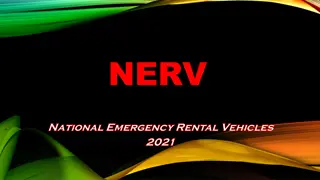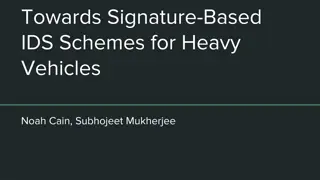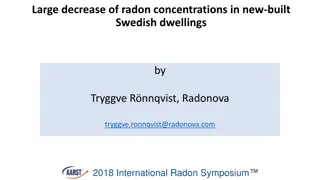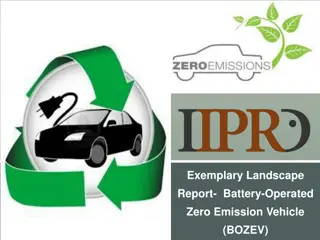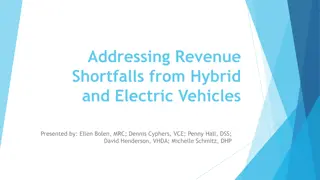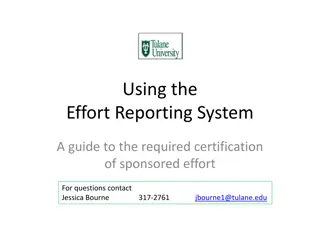Advancements in Electric Road Systems for Heavy Vehicles: Swedish ERS Program Insights
Explore the latest developments in Electric Road Systems for heavy vehicles under the Swedish ERS program, addressing climate-related objectives, national roadmaps, freight transport in Sweden, ERS concepts, and continued efforts in the program until 2022. The focus includes market expansion, emission reduction, pilot facilities, and future goals for full-scale deployment. Witness a shift towards sustainable transport solutions in the global effort to combat climate change.
Download Presentation

Please find below an Image/Link to download the presentation.
The content on the website is provided AS IS for your information and personal use only. It may not be sold, licensed, or shared on other websites without obtaining consent from the author.If you encounter any issues during the download, it is possible that the publisher has removed the file from their server.
You are allowed to download the files provided on this website for personal or commercial use, subject to the condition that they are used lawfully. All files are the property of their respective owners.
The content on the website is provided AS IS for your information and personal use only. It may not be sold, licensed, or shared on other websites without obtaining consent from the author.
E N D
Presentation Transcript
Business models for Electric Road Systems heavy vehicles Swedish ERS program World Road Association (UK) Congress 2018 Cardiff 15 November 2018 TMALL 0143 Presentation engelsk v 1.0 Bj rn Hasselgren PhD
Climate related objectives and visions Paris agreement Sweden will become one of the world s first fossil-free welfare societies Vehicle fleet independent of fossil fuels by 2030 Interpreted as reduction of emission of CO2 with 70% compared with 2010 (Parliamentary Cross-Party Committee proposal) 2
National roadmap for electric road systems in brief Market and funding Promote, contribute to and pave the way for a broadened market and greater competition between the transmission systems by raising more systems to TRL level 5-6. Prepare and implement a major electric road system pilot Create a long-term plan for the construction and development of electric road systems 3
Freight transport in Sweden 65% of the land-based annual performance (tonnekm) on roads. 2/3 of this freight is concentrated to a few major roads. An average transport on road is about 100 kilometers. Public funded roads 217 000 km 35% of the land-based annual transport performance (tonnekm) by rail (EU average 17%). Primarily long distances and very heavy transports Rail capacity is limited and constrained Public funded railroad 14 100 km 4
Many ERS concepts are developed Different perspectives and needs of technology In road On road Beside road Above road Inductive Conductive 5
Continued work in the ERS-program (2018-22) Experiences of different technologies Demonstration- facilities National investment plan for full scale deployment of ERS- systems Evaluation, learning Pilot-facility Business model, legal aspects, conceptualisation, planning 6
Goals with pilot-facility/-ies Full scale testing of all aspects of ERS-stretch Only TRL-8 technologies Testing, but considered as a permament facility Evaluation important (following 1, 3, 5 yrs) 300 MSEK Sw Transport Adm/ 300 MSEK private actors Etc. 7
Business model components in an ERS-system Elecric road Electricity system infrastructure Related services Payment Power generation Access control National grid, 400kV Road infrastructure Information Utilisation measurement Vehicle Access control Pick up Transformation Areas of responsibility Regional grid, 40- 130kV Maintenace Power transfer to vehicle (over head, inductive, conductive road surface) Electric grid along the road Transformation Operation s Financing Local grid, 10-20kV Connection point to grid Ownership 8
A model for interaction and financial flows Power grid fee Power grid owner ERS fee Payment for transport ERS operator Power provider Transport company Power use fee Transport buyer Vehicle manufacturer Payment for vehicle and pick up/pantograph 9
Different actors for different building blocks Responsible actor Public sector involvement Concession or public procurement Under regulation of Swedish Energy Markets Inspectorate (EI) Business package 1: Exisiting power grid Power grid operator Power grid concession In the short run; both forms Busienss package 2: Electric road infrastructure Swedish Transport Administration (initial phase) Procurer in pilots and full scale phases During full scale deployment: concession NA (except for subsidies) Business package 3: Vehicles NA Vehicle manufacturer Business package 4: Systems for access control and measurement Preferably not ERS operator (?) Preferably not 10
Four business-model building blocks Block Owner Financing Legislation Supplier/custo mer 1. Access and measurement Private sector a) Separate b) Combined with 3/4 User fees ERS operator/separ ate provider single user 2. Vehicles Transport services operator Owners/custo mers General market regulation Manufacturer - customer 3. ERS infrastructure a) Transport Administation (STA) b) Electricity company User fees (public) User fees 4. a/b Sw Road Law, EU legislation on fees etc STA/El. grid/ERS operator single user 4. Electric grid and power supply Electricity market players a) Regulated b) Unregulated User fees, access fees Electricty Act , EU legislation El. grid company single user/ERS operator 11
How to handle risk in pilot? Risk-category What? Who covers? How to mitigate? Market Less use than expected Support to vehicle owners Guarantee? Sell-option? Technology Unsufficient function Short life time of technology Only TRL 8/9 allowed Planning Delays and redesign Sw Transport Adm? Early planning process, cooperation and dialogue 12
Business packages and possible actors Vehicle manufacturers Obs! Exempel p akt rer Users/shippers Road infrastructure Electric road infrastructure Electricity trading companies Inside the formal road area Grid owners 13
Necessary actions ahead pilot phase Legal analysis (planning,electricity markets, fees/taxes, payment systems (EETS), procurement, agreements, competition, state aid etc. EU-legislation, TRA regulation/role, exemptions) Choice of pilot stretch and procurement of TRA s part of faciilty Pilot-stretch constructed Formal Road Plan and CB-analysis Specifications/criteria for choice of pilot- stretch (functions, technology, safety, economics/financial model,maintenace, evaluation etc.) Agreement to define responsibilities and delimitations of ownership, financing, maintenace etc. Procurement, negotiated procedure/ competitive dialogue etc. Business models Coordinated action by transport buyers, operators, vehicle manufacturers, technology providers and electricity market actors etc. Development of technolgies and concepts Market actors to organise their part of ERS facility Business models 2021- 2019 2018-2020 14
From now and until 2021 two parallel processes Where? Physical planning 2019 Open application Dec Feb Pilot Legal analysis Decision and construction How? Maintenance etc. 2018-20 Business modelling 15
Bjrn Hasselgren, PhD bjorn.hasselgren@trafikverket.se +46707623316 16
